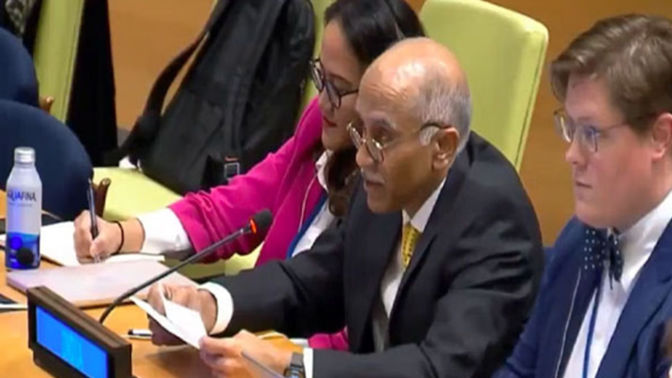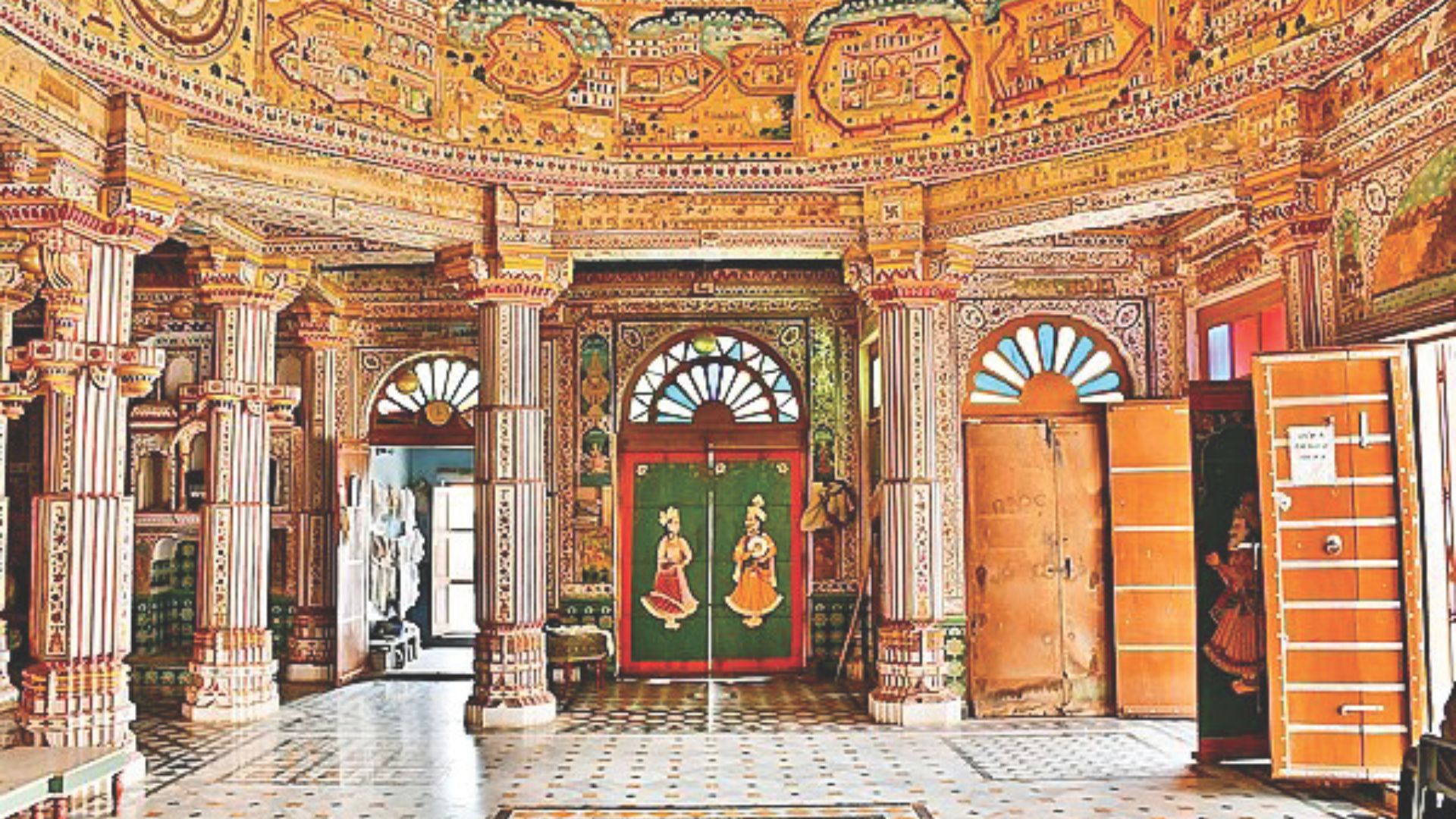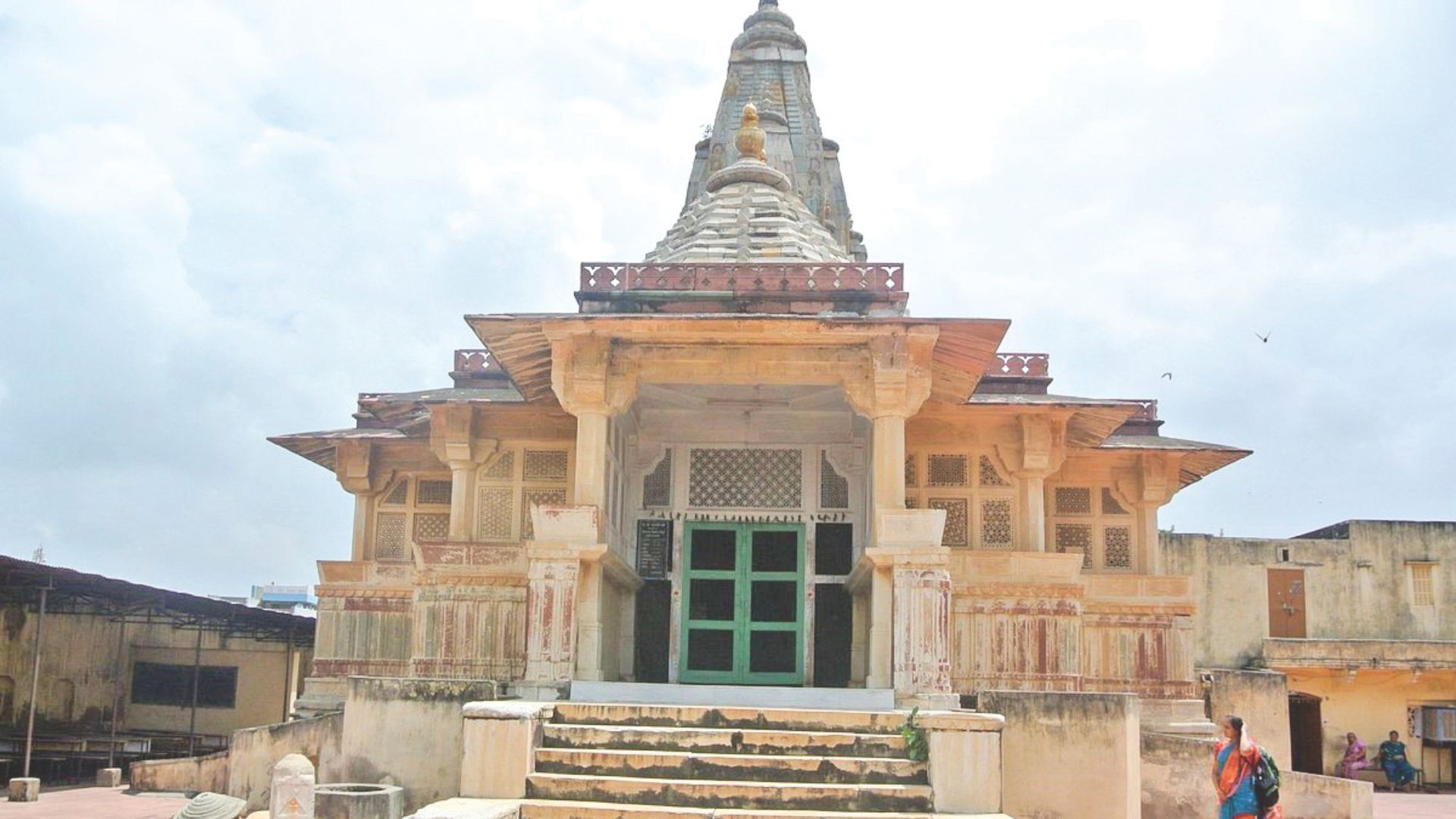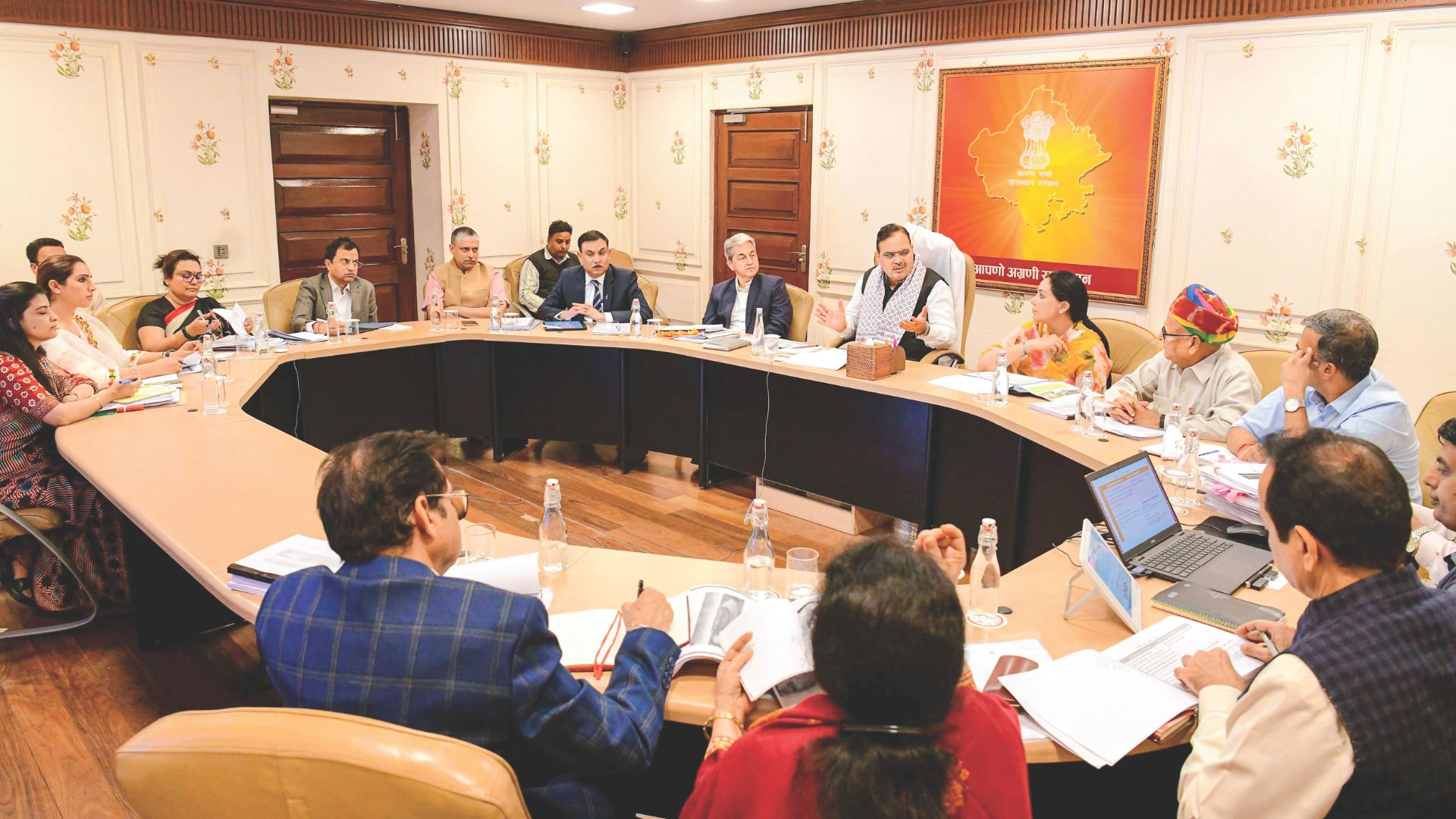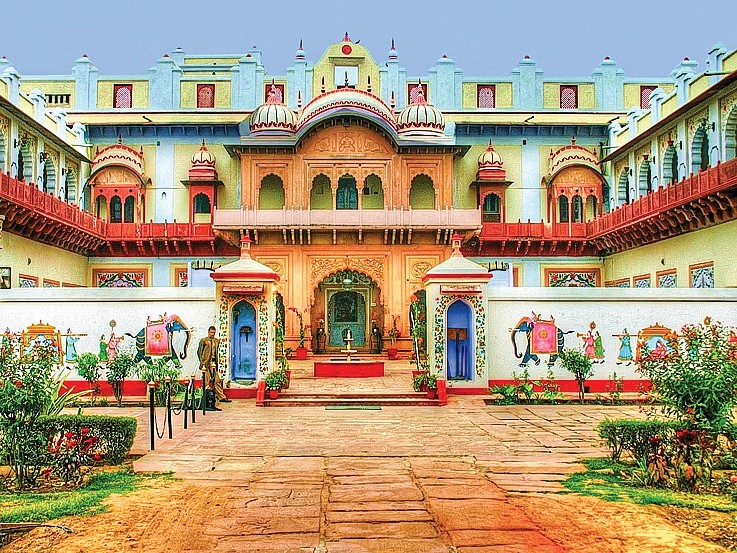
Ganga Mandir is a 19th century temple, initiated by Maharaja Balwant Singh. It represents a unique story of collective contribution and architectural perseverance. In the mid-1800s, when Bharatpur was at its cultural zenith, Maharaja Balwant Singh envisioned a temple that would bring the sacred essence of the Ganges to his desert state. His ambitious vision wasn’t merely architectural; it was a spiritual endeavor to create a sanctuary where devotees could connect with the divine presence of Ganga Maharaj without undertaking the arduous journey to the holy river.
The People’s Temple, A Funding Approach
Perhaps the most fascinating aspect of the Ganga Mandir’s creation lies in its revolutionary funding method. Maharaja Balwant Singh instituted an unprecedented mandate, every wealthy citizen would contribute one month’s earnings toward the temple’s construction. This novel approach transformed the temple from a royal project into a true community endeavor, where every stone laid carried the collective aspirations of Bharatpur’s people.
Architectural Mastery in White
The temple’s architecture is a great representation of the skilled craftsmanship of its era. The pristine white marble deity of Ganga Maharaj serves as the spiritual focal point, its immaculate surface capturing and reflecting light in ways that create an almost ethereal atmosphere. The temple’s design seamlessly blends traditional Rajasthani architectural elements with unique features that set it apart from contemporary structures.
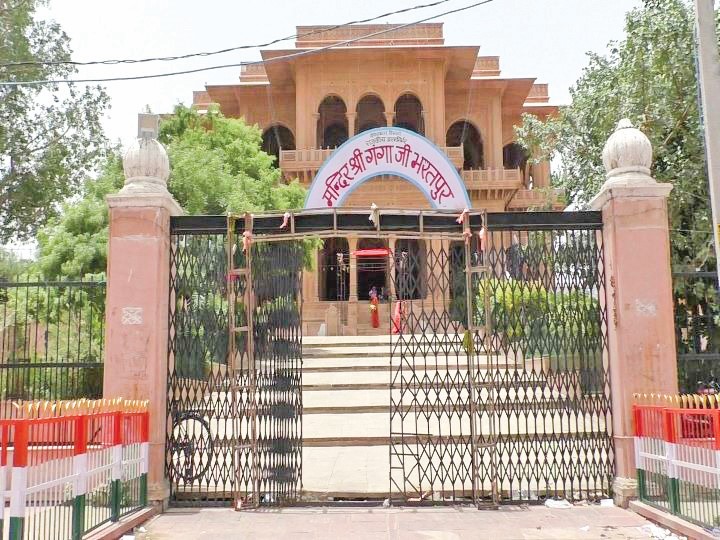
The Interior Brilliance
Stepping inside the Ganga Mandir reveals a carefully planned interior that guides devotees through a spiritual journey. The sanctum sanctorum, housing the marble deity, represents the culmination of this sacred passage. Intricate carvings adorn the walls, each telling stories from Hindu mythology while demonstrating the exceptional skill of local artisans who worked on the project.
The engineering aspect of it
The temple’s construction showcases remarkable engineering achievements for its period. The structure’s stability, despite the region’s harsh climate, speaks to the builders’ profound understanding of architectural principles. The use of local materials, combined with innovative construction techniques, ensured the temple would stand the test of time while maintaining its aesthetic appeal.
Temple’s cultural significance
Beyond its religious significance, the Ganga Mandir has evolved into Bharatpur’s cultural nucleus. The temple complex hosts various religious festivals throughout the year, bringing the community together in celebration. These gatherings maintain the spiritual traditions while strengthening social bonds among local residents, much as they did during the temple’s construction.
Maintaining such a magnificent structure presents unique challenges. The temple has weathered numerous seasons and changes in administration, yet continues to stand proud. Modern conservation efforts focus on preserving its architectural integrity while adapting to contemporary needs, ensuring future generations can experience its grandeur.
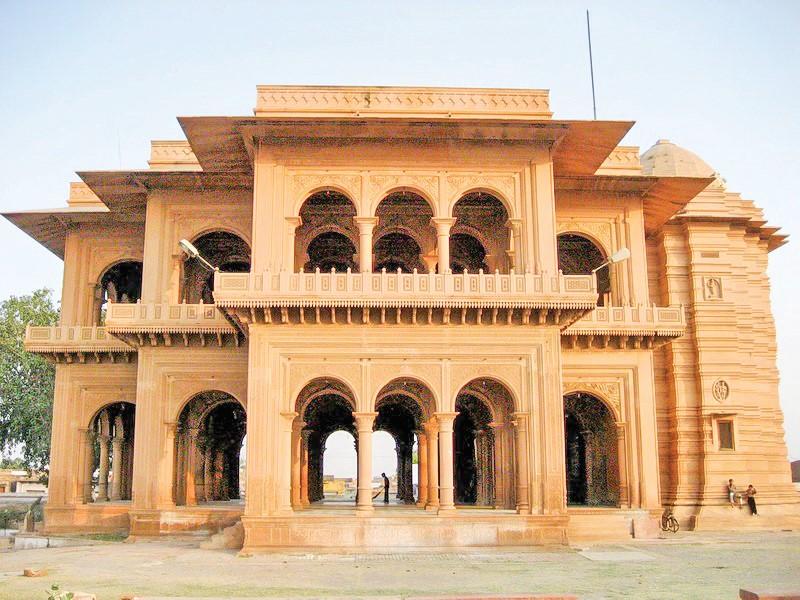
A Canvas of Devotional Art
The temple’s artistic elements deserve special mention. From the intricately carved pillars to the delicate frescos, every artistic detail was carefully planned and executed. These artistic features not only enhance the temple’s beauty but also serve as historical documents, preserving the artistic styles and techniques of 19th-century Rajasthan.
Symbol of Community Unity
The Ganga Mandir represents more than religious architecture; it stands as a symbol of community cooperation and shared purpose. The unique funding model established by Maharaja Balwant Singh created a sense of ownership among the city’s residents that persists today. This collective investment in the temple’s creation fostered a deep connection between the structure and the community it serves.
Modern Significance and Tourism
Today, the Ganga Mandir attracts visitors from across the globe, contributing significantly to Bharatpur’s tourism sector. While maintaining its primary function as a place of worship, the temple has adapted to welcome tourists interested in its architectural and historical significance, creating a delicate balance between preserving its sanctity and sharing its heritage.
Educational Value and Heritage
The temple serves as an important educational resource, offering insights into historical construction techniques, artistic styles, and social organization. Architecture students and historians frequently visit to study its unique features, while cultural programs help younger generations understand and appreciate their heritage.
Looking to the Future
As Bharatpur continues to evolve, the Ganga Mandir remains a constant reminder of the city’s rich cultural heritage. Plans for its preservation and promotion ensure that this architectural marvel will continue to inspire and amaze future generations while maintaining its crucial role in the community’s spiritual life.
The enduring legacy of the Ganga Mandir lies not just in its impressive architecture or religious significance but in the story of unity and shared purpose it represents. In an era of rapid change, this temple stands as a reminder of what communities can achieve when they work together toward a common goal, making it not just a religious monument but a symbol of collective achievement and cultural pride.
Seasonal Celebrations
The Ganga Mandir transforms through the seasons, each bringing its own unique celebrations that paint the temple in different hues of devotion. During Ganga Dussehra, the temple comes alive with special ceremonies that mirror the celebrations along the actual Ganges. The marble deity receives elaborate decorations, and the temple resonates with sacred chants and traditional music. These seasonal festivities not only maintain religious traditions but also provide a structured calendar that brings the community together throughout the year.
Architectural Mysteries and Sacred Geometry
Hidden within the temple’s design are fascinating elements of sacred geometry and astronomical alignments. The placement of various shrines and the main sanctum follows precise mathematical principles that ancient Indian architects often employed. During specific times of the year, sunlight falls on the deity in particular patterns, creating stunning visual effects that demonstrate the builders’ deep understanding of astronomical movements and architectural science.
The Temple’s Role in Social Reform
Beyond its spiritual significance, the Ganga Mandir played a crucial role in social reform during its construction period. The mandatory contribution system instituted by Maharaja Balwant Singh wasn’t just about funding; it was a subtle yet powerful way of promoting social equality. By making wealthy citizens contribute to a public religious institution, the project helped bridge social divides and established a precedent for community participation in public works.
Artistic Evolution
The temple’s artistic elements have evolved over time, with each generation adding subtle touches while maintaining the original essence. The wall paintings, regularly restored by skilled artisans, showcase various artistic styles from different periods. This evolutionary aspect makes the temple not just a static monument but a living canvas that reflects changing artistic sensibilities while preserving traditional techniques.
Women’s Space, A Sacred Sanctuary
Historically, the temple has served as an important space for women’s spiritual and social gatherings. Special areas within the complex were designed specifically for women’s religious activities, providing them with a sacred space for community building and spiritual practice. This tradition continues today, with women’s groups regularly organizing religious and cultural activities within the temple premises.
The Economic Impact
The Ganga Mandir has significantly influenced Bharatpur’s economic landscape. Beyond religious tourism, the temple supports various local industries, from flower vendors to artisans who maintain its intricate artwork. The temple’s presence has spawned a micro-economy of religious goods and services, providing livelihoods to numerous families in the surrounding areas.
Technological Integration and Documentation
In recent years, the temple administration has embraced modern technology for better preservation and documentation. 3D scanning and digital archiving of the temple’s architectural features help in maintenance planning and historical research. Virtual tours allow devotees from around the world to experience the temple’s grandeur, while detailed digital documentation ensures that restoration work remains faithful to the original design.
The temple complex has adapted to modern environmental challenges while maintaining its traditional character. Recent initiatives include rainwater harvesting systems and energy-efficient lighting. The temple gardens are maintained using organic methods, and there’s a growing emphasis on waste management and sustainable practices in temple operations.
Perhaps most importantly, the Ganga Mandir serves as a crucial bridge between generations. Young people involved in temple activities learn traditional arts, music, and rituals from elder community members. Regular cultural programs help transmit religious and cultural knowledge to newer generations, ensuring the continuity of traditions while adapting to contemporary needs.
